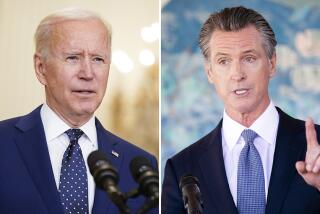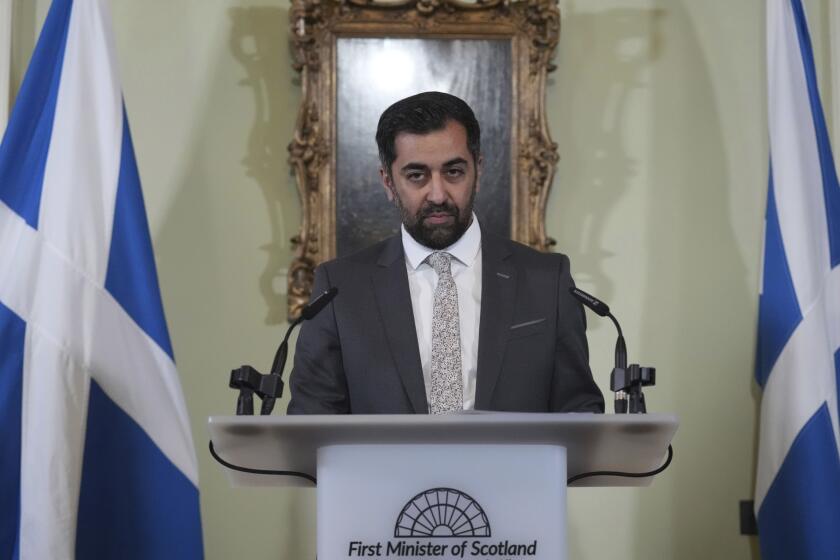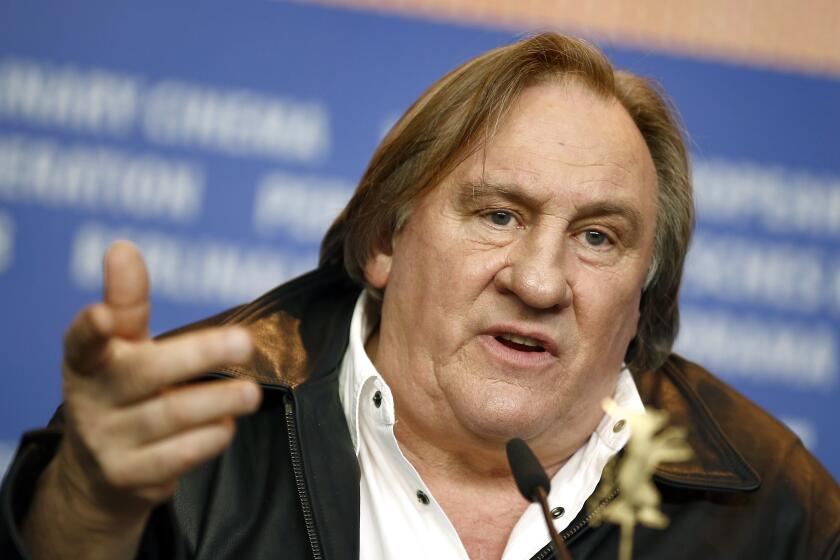Taking a stand for democracy in Nepal
KANAK DIXIT and I began drafting this article three weeks ago to try to draw attention to the disaster unfolding in Nepal, where a corrupt, absolute monarch has spent four years pushing the hands on the democracy clock back toward midnight.
Unfortunately, Kanak, one of the finest journalists in Nepal, wasn’t able to approve the final draft. On April 8, this gentle man with a sly sense of humor was abruptly tossed in jail. About 200 other Nepalese journalists also have been rounded up in the last two weeks, either for attending demonstrations demanding democracy and freedom of the press or for covering such demonstrations, which have erupted in the capital, Katmandu, as the king’s rule has become ever more repressive.
It’s not surprising that Americans have only the gauziest notion what’s going on in Nepal. The news stories sound as if they could have been written from any of several dozen troubled Third World countries where angry insurgents threaten an oppressive regime.
But Nepal’s story has its own quirks. A landlocked Hindu monarchy, it is a gorgeous place of mountains, plains and jungles, blighted for centuries by poverty and harsh ethnic and caste discrimination. High-caste elites in Katmandu have always dominated in Nepal, and development has usually been a distant afterthought. Per-capita income stagnates at just $240 a year.
Nepal’s cast of characters includes:
* Maoist-inspired guerrillas who spout 1950s-era rhetoric while waging a dirty war across an expanding swath of territory. China has denounced the rebels as anachronistic, but, since 1996, about 13,000 Nepalese villagers have been killed in the crossfire between the insurgents and the government. Nepal today has the world’s highest rate of political “disappearances.” Many can be traced to the government, but the Maoists also have slain thousands. Teachers and politicians are frequent targets. Insurgents also conduct brutal reprisals in villages that buck their authority.
* King Gyanendra, who was crowned in 2001 after the former crown prince, distraught over a marriage dispute, massacred most of the family at a royal dinner. Before that, Gyanendra had been the family’s financial manager. Since taking the throne, he is widely believed to have continued the royal tradition of shady business dealings. He has used the war with the Maoists as an excuse to suspend all democracy and assume absolute powers. Parliament was dissolved in 2002. The king jailed the leaders of the main political parties in 2005, and he has spurned cease-fire negotiations with the rebels. In the last week, his forces have shot at least a dozen demonstrators in the streets, according to human rights organizations.
* The U.S. government, which, while promoting democracy elsewhere, staunchly defended the Nepalese monarch until recent days. In a Cold War policy throwback, Washington worried that a takeover by the Maoist guerrillas would prove worse than the king. Kanak and many others were mystified in February to see American officials offer only tepid rebukes when the king jailed the leaders of the country’s mainstream political parties. Now, with near-daily democracy demonstrations, even the U.S. seems to be slowly waking to the fact that perhaps it should stand with the people against the crown.
The U.S. was indignant when Nepal’s democratic political parties joined the Maoists to sign a 12-point agreement against the king. The Maoists agreed to enter mainstream politics, and the seven political parties agreed to begin revising the constitution to make it more inclusive. The U.S. has long maintained publicly that there is no military solution to Nepal’s conflict. It fears that the Maoists are just using the established political parties as a Trojan horse to infiltrate and take over the country. Still, it is bewildering that Washington would find political dialogue unacceptable. Most Nepalese feel it is time to find out whether the Maoists are ready to forswear violence, reasoning that it’s worth calling the insurgents’ bluff, if it is one.
Kanak has always argued that Nepal had a dozen years of successful democracy after the monarchy was sidelined to a constitutional role in 1990. Just because Nepal’s young democracy made mistakes, he said, was no reason to return to monarchical rule. The public rightly expects party leaders to run the government, not royalists in the palace or Maoists in the jungle. So why shouldn’t they talk to the rebels?
Even the U.S. ambassador has been forced to conclude that unless the king “begins an irreversible process of handing over power, I do not think his state will last long.”
For the protesters facing bullets in the streets of Katmandu, and for my friend Kanak in his jail cell, I hope Washington’s embrace of democracy will transcend its old fears.
More to Read
Start your day right
Sign up for Essential California for news, features and recommendations from the L.A. Times and beyond in your inbox six days a week.
You may occasionally receive promotional content from the Los Angeles Times.






